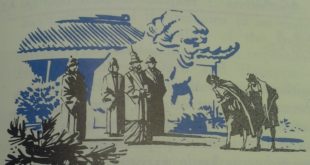In the same way that important ancient civilizations grew out of small beginnings in the valleys of the Nile, the Tigris-Euphrates and the Indus, so another great civilization of Early times — that of China — was cradled in the valley of the Yellow River. To be sure, China’s civilization did not commence as early as did Egypt’s, Mesopotamia’s, or India’s. The ancient Egyptian and the Mesopotamian kingdoms lost their power many centuries ago and early India never became completely united under one empire. China therefore has had a longer national life than any other ancient or modern state. It …
Read More »Tag Archives: Yangtze River
The Powers Carve Up China 1841 – 1914
China, that immense portion of East Asia bounded by the chilly Amur River and the hot jungles of Indo-China, by the Pacific Ocean and the Himalaya Mountains, was the most populous country on earth. For thousands of years, China had had a highly developed civilization. Its people thought of their land as the world itself; to them, it was the Middle Kingdom between the upper region, heaven and the lower region, hell, which was made up of all other lands. They considered foreigners nothing but barbarians. Only a few Europeans had entered China since the Middle Ages and the Chinese …
Read More »The Six Dynasties: Turmoil and Change A.D. 220-589
THE three states into which China had split were soon split up themselves into even smaller divisions. For three and a half centuries, war raged almost continuously among rival kings. Doubt and confusion were everywhere. The period between 220 and 589 is called the Six Dynasties era, after six ruling families in a row which used Nanking as their capital. In all those years‚ the memory of the Han Empire never died. Looking back longingly at the peace and order of that time, the people came to think of the Han government as the great model which all rulers should …
Read More »China under the Han 206 B. C. – A. D. 221
THE vast East Asian land of China is named after its first family of emperors, the Ch’in. The Ch’in brought the country together under one government and built the Great Wall to keep out northern barbarians. They were in such a hurry to get things done, however, that they drove their subjects too hard and lost their support. In 206 B.C., after only a few years in power, they were overthrown. The Ch’in were replaced by an imperial family named Han. The Han dynasty ruled for two centuries before the time of Christ and then, after a break, for another …
Read More »The Land of the Great Wall 4000 B.C. to A.D. 220
For many generations, the ancestors of P’an Keng had considered themselves kings in northern China. Yet this family of kings, the Shang Dynasty, had never governed from a central capital. About 1380 B. C., P’an Keng decided it was time to set up a capital. He found what seemed to be the perfect site at Anyang. Situated near a bend in China’s Yellow River, the fertile plains were ideal for farming and pasture, while the mountains behind it had timber and wild game. Only one thing remained: P’an Keng had to find out if the move was approved by the …
Read More »



